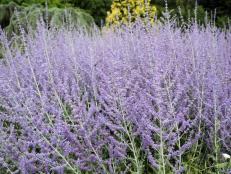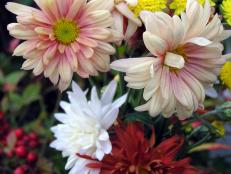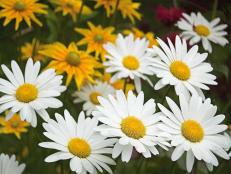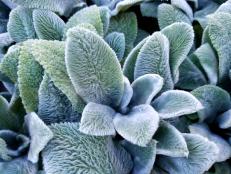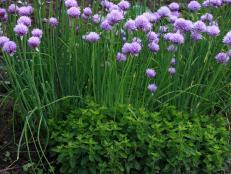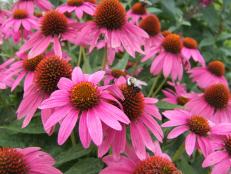Salvia Plants: Growing and Caring for Ornamental Sage
With over 900 species — annuals and perennials — it's easy to find a variety of low-maintenance salvia for your yard.
Discover the wonderful world of salvias. Part of the mint family (Lamiaceae), salvias are known for their velvety leaves.

Blue Marvel salvia
This group of garden plants boasts a delightful mix of blooming beauties, including annual bedding types, perennials and desert natives. Culinary sage, revered for its role in poultry seasoning and stuffing, belongs to the salvia clan, as does the famous chia seed plant, Salvia hispanica.
How to Grow Salvia Plants
Planting
Salvia plants thrive in full sun tucked into well-drained soil that's on the lean side. You can plant salvia after the last frost date, in the spring.
Once plants are established, they don't typically need additional moisture to thrive. Overwatering and soil that stays soggy in winter are probably the top reasons why salvias die in the landscape. When siting these drought-loving salvias, keep them in spots where automatic irrigation systems don't reach.
The one exception to the no-extra-moisture rule are the annual bedding salvias. This group includes scarlet sage (Salvia splendens), mealycup sage (Salvia farinacea) and pineapple sage (Salvia elegans). These salvias benefit from consistent moisture and more so when grown in containers. Bedding salvias are usually smaller in size than the perennial types, but they don't demand additional care for their flower power.
Like other salvias, the bedding types also offer low-maintenance personalities.
Include Salvia in Your Garden
20 Flowers and Plants Rabbits Hate 21 Photos
Salvia is among our pretty, bunny-resistant flower and plant picks for your garden.
Our Favorite Butterfly Garden Flowers 26 Photos
Butterflies love these vibrant flowers and plants that can create a bold border for your yard.
Salvia's Height and Width
Do your homework when adding salvias to your garden to make sure you're getting a plant that fits your yard space.
Most salvia species grow quickly. and some of these natives can grow quite large. Cleveland sage (Salvia clevelandii), for instance, reaches a mature size of 3 to 5 feet tall by 5 to 8 feet wide — it's not the right salvia for a small suburban backyard. Bee sage reaches a size of 4 to 5 feet tall and wide, forming a substantial shrub.
Growing Salvia Seeds
Many salvia seeds sprout easily and make trying different sage plants a project you can tackle from seed to harvest. Try your hand at growing perennial or annual salvia seeds.
One group of salvia seeds worth sprouting are the annual bedding types. This group of salvias includes mealycup sage, Salvia coccinea (Texas sage/scarlet sage) and Salvia splendens (also known as scarlet sage). Start these salvias indoors to get a jump on the growing season and have flowers sooner than seeds sown outdoors.
If you're growing named varieties or cultivars of these bedding salvias, saving seed to sprout won't yield plants similar to the parents. With mealycup sage, you'll likely find offspring disappointing compared to parent plants. For Texas sage, the offspring plants from seed may produce interesting flower colors.
Sprouting perennial salvia seed is also a task you can start early indoors. For types that are hardy in cold-winter regions, try winter sowing techniques to sprout a crop of salvia plants. Again, though, be warned that seed of some cultivars may be sterile and won't yield offspring similar to parent plants.
Most salvia seed need light to germinate. If you're starting seeds indoors, moisten seed starting mix, then sprinkle seeds on top of the mix. Gently press them to make contact between moist mix and seed. Most gardeners cover their seeds with some type of plastic dome or sheeting to retain moisture and improve germination. To avoid disease problems, make sure your cover doesn't touch seeds or seedlings.
One of the most famous salvia seeds is that of the chia plant. Chia seeds are celebrated for two opposite roles. The first is as a highly nutritious healthy food. The second is as the famous sprout on Chia Pets. Chia seeds bring a wealth of healthy benefits to diets, including calcium, protein, omega-3 fatty acids and many vitamins.
While it's possible, most gardeners don't try to grow culinary sage from seed. Sprouting this type of salvia seed is a slow-growing process, and the result, if it's from seed you collected yourself, may not yield the same flavorful leaves you treasure from your favorite sage. This is especially true if you are growing several culinary sage plants and cross-pollination occurs.
For the native chaparral sages, like bee sage (Salvia apiana), Cleveland sage and Mexican bush sage (Salvia leucantha), you can let plants self-sow in a naturalized setting. For gardeners in areas where these salvias aren't hardy, it's best to start seeds early indoors or purchase seedlings from garden centers.
Salvia Varieties
The name may not mean much to you, until you learn that this is the plant that produces chia seeds. The common name for Salvia hispanica is chia, and it's the plant responsible for yielding crops of highly nutritious chia seeds, which are also used for sprouting Chia Pets. It's easy to grow, though more commonly harvested for its seeds than blooms. It's a short-day plant, meaning that it needs long nights to produce flowers, then seeds.
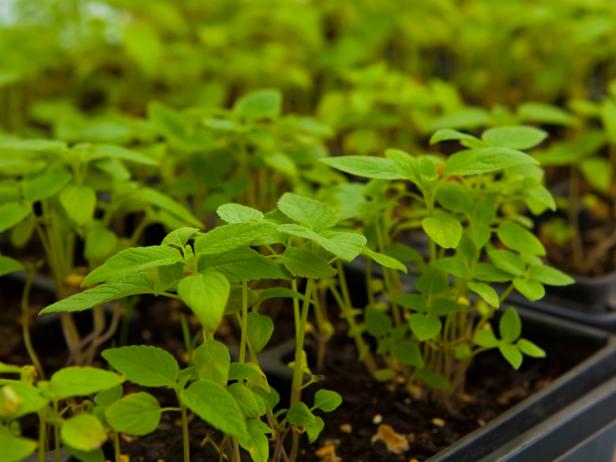
Salvia hispanica
One of the most famous salvias is culinary sage (Salvia officinalis). Sometimes called common sage or garden sage, this salvia brings flavorful leaves to garden and kitchen. Traditional garden sage unfurls pebbled gray-green leaves, but other varieties offer unusual leaf colors.
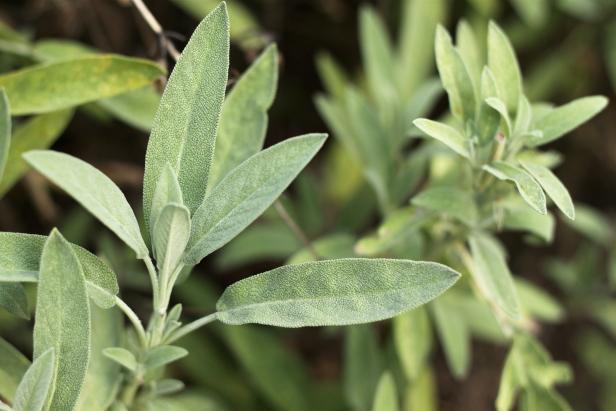
Mikulas P / Shutterstock.com
Sage (Salvia officinalis)
Golden Variegated Sage (Salvia officinalis 'Icterina')
Golden variegated sage has green leaves edged in gold. This evergreen perennial has both ornamental and culinary features and also attracts butterflies.
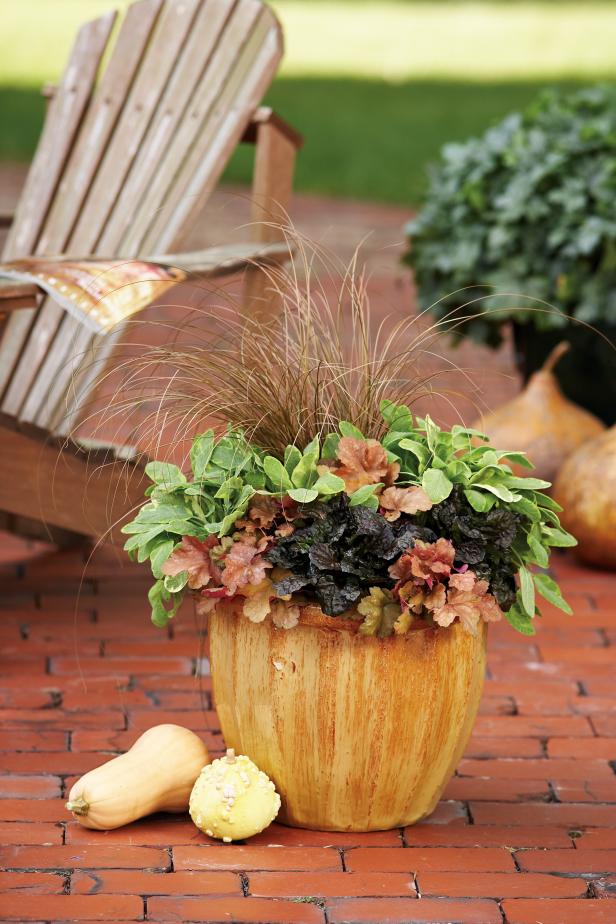
Photo courtesy of Proven Winners
Included in this container mix of 'Black Scallop' ajuga, Toffee Twist carex and Dolce Peach Melba heuchera, is golden variegated sage (Salvia offcinalis 'Icterina').
'Tricolor' Sage (Salvia officinalis 'Tricolor')
'Tricolor' sage sports leaves with grey green, cream, purple and pink hues. This ornamental herb, which can be used in cooking is also a favorite of bees and butterflies.
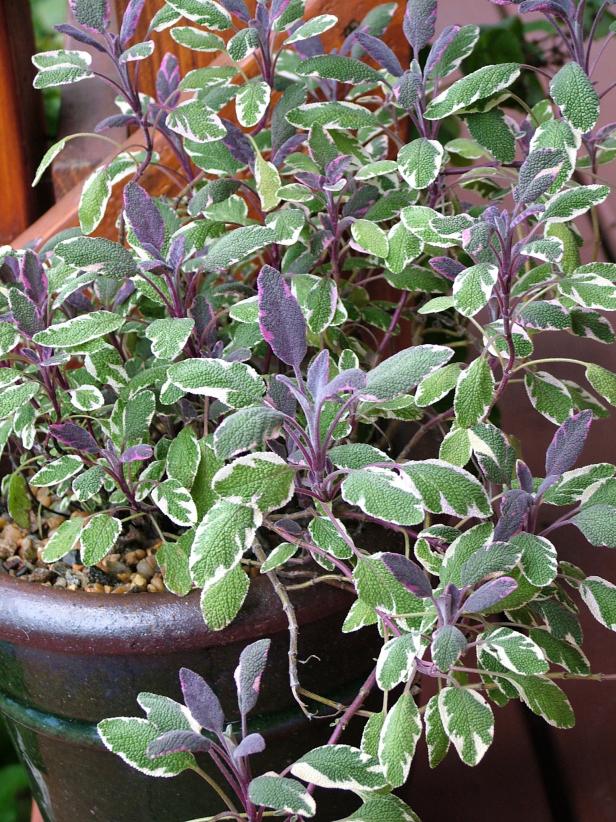
Tricolor sage
Also known as white sage, this California native sage is so named because when it flowers, bees (and other pollinators) literally mob the plants. When you include bee sage in your landscape, you'll be treated to a buzzing chorus once flowers appear. is a woody native shrub hailing from the Southwestern US and northwestern Mexico. Its fragrant leaves are often used in incense-making. White flowers appear on 3- to 4-foot-long stalks in spring through summer.
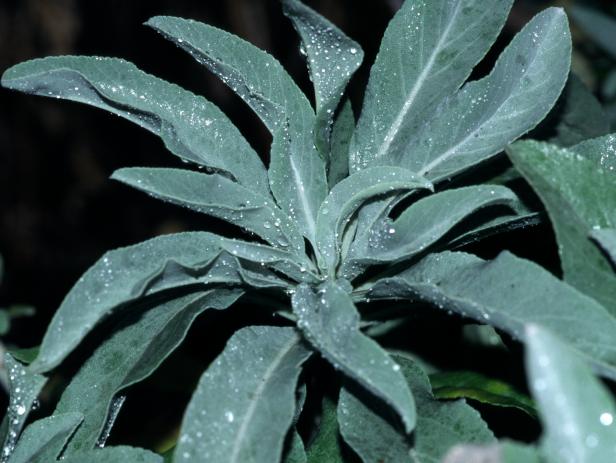
White sage (Salvia apiana)
Another California native sage, these native salvias produce beautiful plants and flowers that suit California's drought-prone environment. As a matter of fact, these salvias curl up and die if they're watered regularly once they're established. For the most part, bee sage and Cleveland sage don't need additional water, except in extreme drought.
With Cleveland sage, the showpiece is again the blooms, which absolutely burst with fragrance. Place these plants upwind from outdoor seating areas to savor the rich perfume.
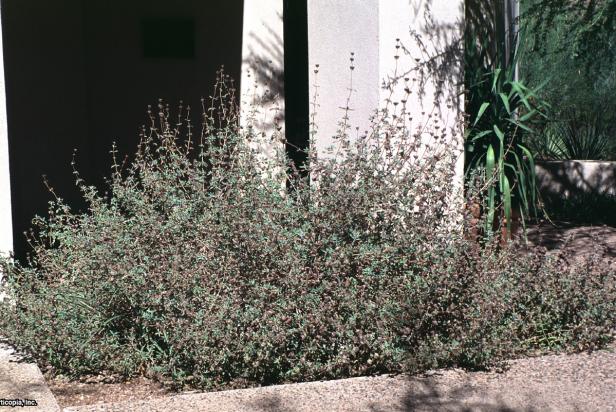
Cleveland sage
Give your garden a splash of color courtesy of a drought-tolerant beauty: autumn sage. Known botanically as Salvia greggii, autumn sage goes by several common names among gardeners, including cherry sage, Gregg's sage and Texas sage. This perennial is hardy in Zones 7 to 9, although some varieties like 'Wild Thing' boast hardiness to Zone 6.
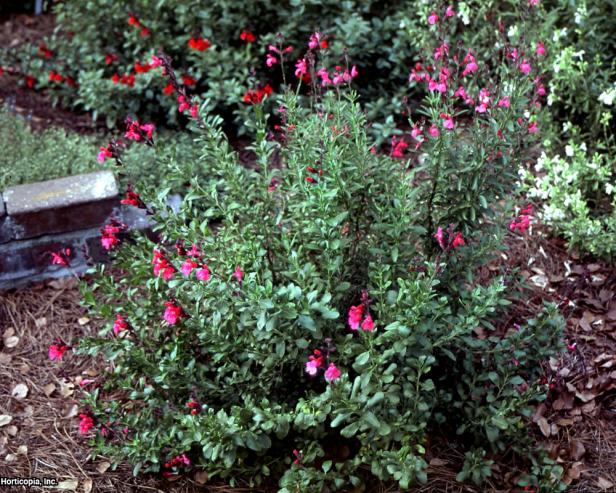
'Texas sage, scarlet sage or blood sage' (Salvia greggii)
This salvia plant produces typical sage-type flowers: spikes of individual blossoms held high above leaves. Like other salvias, 'May Night' stages the best flower show in full sun. Botanically, 'May Night' salvia has a host of names, including Salvia nemorosa, or woodland sage, as well as Salvia x sylvestris 'May Night', Salvia 'May Night' and Salvia 'Mainacht'. You may find plant tags with any or all of these names. 'Mainacht' is a clue to this salvia's German heritage. The word translates directly as "May night."
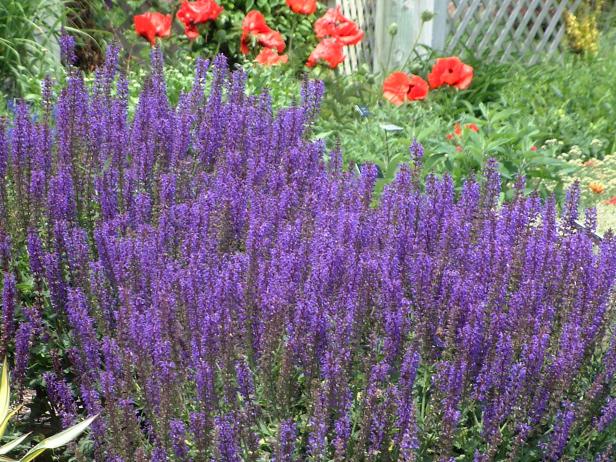
PerennialResource.com
'May Night' salvia
Give your garden a shot of bold color with the bright red blooms of Salvia coccinea. This salvia has a host of common names, including Texas sage, scarlet sage and blood sage. The plant is most likely native to Mexico, but it has naturalized readily through Texas and the Southeast, as well as through Central America and into Northwestern South America. Salvia coccinea sprouts readily from seed without being invasive, and it flowers non-stop. Texas sage is a welcome sight in any setting. In its natural form, Salvia coccinea opens red flowers along spikes that stand above bright green leaves. It's the red blooms that have earned it the common names of scarlet sage and blood sage. The tricky part of all these common names is that there are other plants known as scarlet sage and Texas sage, which don't resemble Salvia coccinea. So if this is a plant you want in your garden, buy seeds or plants by using the botanical name of Salvia coccinea.

Image courtesy of All-America Selections
Salvia coccinea










